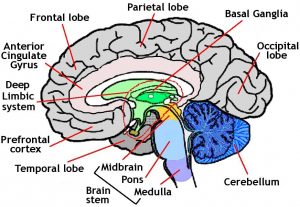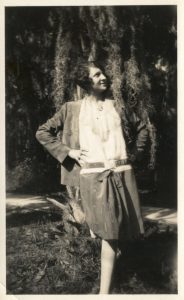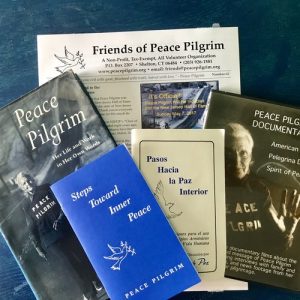In our current world of the pandemic, are practices of pouring love on the brain good for us? What exactly is love? Very hard to define in a sentence as there are many kinds of love: love of family, animals, friendships, romantic partners, toxic love, crazy love, obsessive love, love for God, Universe. Many people have written books, poetry and songs on love. I am thinking of meditation and mindfulness as daily “practices of love on the brain” that regular folks, like me, can incorporate in their routines.. Not just the monks on remote mountains. I am referring to practices of love on the brain as described in the book, “How God Changes Your Brain” by Dr. Newberg and Mr. Waldemann (2009). They describe meditation practices of breathing techniques, relaxation and focused attention or contemplation on an object (characterized with love, compassion and peace). Dr. Newberg and his colleagues argue this type of practice lead to changes in the brain. The topic of meditation includes many different practices. Meditations can be faith based (focused attention on a loving and kind God). Mindfulness practices (a form of meditation) are secular (focused, nonjudgmental, loving and accepting attention) on the unfolding present moment . Present moments may focus on breath, walking, eating, nature, watching flickering light of a candle. I have come across many APPS in the digital world focusing on mindfulness exercises. Essentially, Dr. Newberg argues that faith based meditations and secular mindfulness practices are based on focusing on some sort of love, kindness, compassion or benevolent process: pouring love on the brain. These practices have been linked to changes in brain activity and report of positive emotions.
Are experiences of “love on the brain” related to only grand mystical experiences of holy saints? Can there be everyday mysticism? James Martin’s Everyday Mysticism eloquently describes that mysticism is experiencing God’s presence in the ordinary human existence which “lifts up” how we are in the world or thinking and perceiving the world. Mysticism can be a sense of feeling overwhelmed by God’s presence that transcends your understanding of God. Most people, who have described mystical experiences to me, describe feelings of great joy, peace or sense of getting profound understanding of something that was initially very puzzling. I hear the spark of profound joy when people describe mystical experiences to me. James Martin argues that mysticism is not just for the saints in the world, but, mystical experiences happen to regular folks. Everyday mystical experiences may be holding your newborn child or infant, falling in love for the first time, watching the unfolding colors of a beautiful sunset, or walking on a majestic landscape beside the ocean, or hearing the harmony of a rustle of plants in a field or watching the expansive night sky.
Can modern neuro-imaging techniques, such as brain scans, detect changes in the brain when people are in deep meditation or secular mindfulness practices? This post is a discussion of neurobiological changes and psychological feelings associated with God as love based meditation. Are these mystical experiences?. It also covers brain changes and feelings in secular mindfulness based experiences. Is “practicing pouring love on the brain” (faith based meditations or secular mindfulness practices) good for you in the pandemic where the outside world is in turmoil and chaos ? Research findings indicate that love based practices in meditation or mindfulness are related to changes in brain activity, correlated to positive feelings: loving kindness, compassion, peace, higher level of reasoning, connection to a Higher Power or Consciousness and less fear. These practices seem to facilitate love over fear. Less fear likely trickles down to body changes. Not activating the stress response system is a good thing for the body. I will discuss the research findings behind the meditation and mindfulness practices and brain changes, by reviewing work of Dr. Newberg and Dr. Jon-Kabbat Zinn, both pioneers in their work of integrating love and neuroscience.
Brain Scans of Meditation and Mysticism (Practices of Love on the Brain).
Please feel free to ignore picture brain neuroanatomy if this is not your cup of tea. The rest of the discussion is pretty cool. At least to me.

Diagram of Brain clipart
Pixy.org
Dr. Newberg’s work has caught national attention. His work has been published not just in science journals but also in Newsweek and Los Angeles Times. What Dr. Newberg does is pretty phenomenal and cool? He conducted studies of brain scans of people, engaging in spiritual practices, from different religious and spiritual backgrounds. Dr. Newberg is a key figure in the emerging interdisciplinary field of neurotheology, which studies changes in brain function and structure when people are having spiritual experiences. Neuroimaging or brain scans of people in spiritual practices indicate changes in blood flow to different parts of the brain. Dr. Newsberg notes that God is too vast and immense for the human mind to grasp. I agree. However, research findings of Dr. Newberg and his colleagues are fascinating.
Brain Scans of Buddhist Monks and Catholic Nuns
Dr. Newberg and his colleagues (2001) conducted brain scans of 8 Buddhist Tibetan monks in their meditation practices, focused on pure consciousness or awareness, as Buddhism is described as a nontheistic tradition. Dr. Newberg and colleagues (2003) studied brain scans of three catholic nuns doing the meditative centering prayer. Centering prayer refers to verbally meditating and focusing on a phrase in the Bible or prayers that the nuns focused on verbally to open themselves for the experience of feeling God’s presence. Catholicism is primarily characterized as a theistic religion.
Dr. Newberg describe that the brain scans of the Buddhist monks and Catholic nuns demonstrate similar patterns of brain activation: activation of the frontal lobes (higher level of complex thinking and reasoning), anterior cingulate (linked with feelings of compassion, peace and kindness) and deactivation of the limbic system (amygdala) which scans for threats, generate feelings of fear and activate the stress response system. Earlier post on Endurance discussed that the ongoing stress of the pandemic may be activating the amygdala and stress response system (impacting brain and body) of many folks. Dr. Newberg and Mr. Waldeman (2009) discussed the research finding that brain scans of Buddhist monks and Catholic nuns, while in spiritual practices, demonstrated lower activity of parietal lobe. When parietal lobe activity decreases, person’s sense of separate individual selfhood dissolves and person is likely to feel more connected to the object of their contemplation. Dr. Newberg indicates that the Buddhist monks goal was to experience pure consciousness or awareness. The Catholic nuns expressed coming closer to God. Barbara Bradley Hagerty states that these are perhaps brain scans of mystical experiences.
Brain Scans of Pentecostal believers while “Speaking in Tongues”
Dr. Newberg conducted brain scans on five women who are Pentecostal believers, engaged in Glossolalia or speaking of tongues, a type of contemplative prayer. This type of prayer focuses on voluntary surrender of self to God. The brain scans of the Pentecostal people speaking in tongues, showed decreased activity of the frontal lobe and increased activity of the limbic system. This finding is the opposite to the patterns of the brain scans in Buddhist monks and Catholic nuns. These participants reported intense levels of emotional experiences and conscious states of peace and serenity.
Intensive Islamic prayer
Newberg and his colleagues (2015) conducted case studies on brain scans of three individuals doing intense Islamic prayer practices, focused on surrendering of self to Allah. The researchers compared brain scans of subjects in regular states versus in Islamic prayer states. Researchers found that when engaged in Islamic prayer of surrender to Allah, individuals showed decreased activity in frontal lobe and decreased activity of parietal lobe, which suggests loss of sense of separate self and merging with object of prayer.
Point of Caution
Again, there is criticism of Newberg’s work, especially changes in brain activity and feeling states are correlational and cannot be interpreted with anything causing anything. However, findings are intriguing. I am fascinated in the finding of similar patterns in brain scans when people from different spiritual and religious traditions are engaged in love based meditation, whether focused attention is on God or Pure Consciousness. The practice of love on the brain appears to be related to changes in feelings: more peace, kindness, compassion and connection to object of contemplation. The report of lowered activity of parietal lobe in brain scans of Buddhist monks, Catholic nuns, Muslims in prayers states linked with feeling greater connection to the Universe or God certainly sounds like a mystical experience. All great stuff, especially in the world of the pandemic we live in now. Perhaps there is something to the notion that “God is Bigger than One Religion”. I first saw this concept on a sticker boldly posted at the back of the car while stuck in long commutes on the traffic congested freeways of pre-COVID southern California. This concept always stuck with me.
Brain Scans of Secular Mindfulness and Everyday Mysticism (Practices of Love on the Brain)
Dr. Jon Kabbat-Zinnis is a revolutionary figure in the world of integrative medicine or mind-body medicine. He is one of the first western researchers, meditation teachers and scientists who integrated secular mindfulness practices, such as, Mind Based Stress Reduction, in treating different physical and mental health conditions. The research findings suggest a positive relationship of mindfulness based programs in the effective alleviation of symptoms of depression, anxiety, chronic pain, rumination, cardiovascular practices, eating disorders and addiction medicine etc. Dr. Kabbat-Zinn’s research findings led to the proliferation of mindfulness programs through out the country, especially in mind-body medicine, where psychological states are linked to physiological processes..
As discussed before, mindfulness practices include breathing techniques, relaxation and focused attention with nonjudgement, curiosity, loving kindness and acceptance on the present moment. Mindfulness practices teach us to sit with experiences that arise and not jump to labeling it as “good” “bad” or “ugly”. Students of mindfulness are taught to accept “it is what it is” and curiously investigate the experience with openness of mind. It includes a practice of pouring love on the brain and body. Alan Powell’s (2018) article, “When Science Meets Mindfulness” in the Harvard Gazette also discussed the effects of mindfulness practices on people. Research findings indicate practice of mindfulness techniques is associated with lowered activity of the amygdala (limbic system). This amygdala is the alert system in the brain which detects threat and generates the body’s stress response system to deal with threat.
Lowered activity in the amygdala and less fear based responses (less worry, and less worst case scenario pondering) are wonderful things in a world held hostage by a virus. Especially as many spiritual teachers teach the distinction between two paths: fear versus love. For me, fear is a heavy, constrictive feeling which limits psychological flexibility, creativity and compassion. Love is a more expansive feeling of wholesomeness which generates creativity, joy, compassion, kindness and connection to others and the Divine Source. Love moves me forward through this almost year long pandemic with hope in my heart for a safer world. That is pretty much close to everyday mysticism for me. Miraculous stuff. For that I am immensely grateful.
CLOSING THOUGHTS
In summary, I will argue that practices of pouring love on the brain are good for us in the pandemic: Less Fear. (We have too much fear in the world and I am no stranger to fear). Love, Kindness, Compassion. Connection to Higher Power, Mysticism, Cosmic Awareness. These positive emotions likely impact our bodies with less stress. What is fascinating is that people perceive love and compassion in so many different things, ranging from the Vastness and Undecipherable Divine Consciousness, God, to the breath in the present moment. By the way, I am a big fan of God and my breath. Focused attention on love seems to change the brain radically. That is pretty magical and miraculous. Rumi, a Persian, Sufi thirteenth century mystic (one of my favorites)summarizes a fundamental truth that “Love is the bridge between you and everything”. Rumi is spot on.

